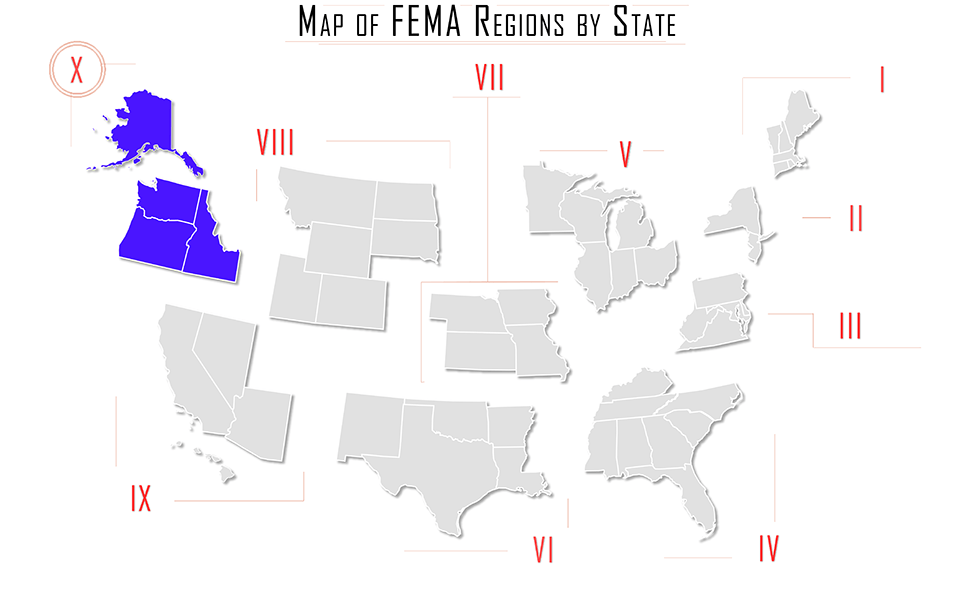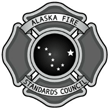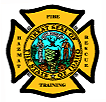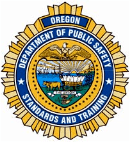.png)
At the Region is an ongoing feature that discusses the state-by-state training, certification and employment requirements of first responder departments across the nation. This section looks at the history and development of first responder standards, and spotlights the way that small departments integrate local specialties into national regulations. In this issue, At the Region begins by looking at requirements in the northwestern United States, including Alaska, Washington, Oregon, and Idaho. EMS requirements for this area can be viewed here and LEO requirements here.

FEMA Region X - Firefighters
Alaska
Department of Public Safety - Alaska Fire Standards Council
Alaska's Standard for Firefighter Professional Qualifications, AK-NFPA 1001, can be found here and a full list of all certification levels here.
Basic Firefighter Certification Requirements
Firefighter Directives Overview
The Firefighter certification directive is based on industry standards and was developed to provide Alaska fire service agencies with a method to attain knowledge and skills for firefighting activities. The directive is referenced to NFPA 1001, Standard for Firefighter Professional Qualifications, and is intended to provide a standard level of firefighter training through a credible certification program.
The Alaska Fire Standards Council (AFSC) Firefighter I & II certification levels are accredited through the International Fire Service Accreditation Congress (IFSAC) and the National Fire Service Professional Qualifications Board (ProBoard). Training for either level is typically available through AFSC/TEB accredited fire department programs.
For Firefighter I and II certifications, individuals must meet AFSC application requirements and complete the following elements:
1) Firefighter course specific to the level of certification;
2) Practical (JPR) requirements specific to the level of certification;
3) Successful completion of the AFSC Firefighter written examination (70% minimum score) specific to the level of certification.
A written examination is administered to ensure applicants have met the requisite knowledge requirements within the NFPA standard. Certification for Firefighter I and II is also available through a reciprocity process.
Firefighter I
a. Applicant must be at least 18 years of age;
b. Applicant must be an Alaska resident or member of an organized fire department or an emergency response organization registered with the Division of Fire and Life Safety, and;
c. *Successfully complete an AFSC/TEB approved Firefighter I course and;
d. *Successfully complete the AFSC written Firefighter I exam with a minimum score of 70%;
e. Complete a Hazardous Materials Operations (NFPA 1001, 5.1) course and successfully complete the certification examination (NFPA 472, Chapters 4 & 5).
*Note: The course requirement and the written test requirement must be completed within three years of application date and must meet NFPA 1001 core requirements.
Firefighter II
a. Applicant must be an AFSC certified Firefighter I;
b. Applicant must be an Alaska resident or member of an organized fire department or an emergency
response organization registered with the Division of Fire and Life Safety, and;
c. *Successfully complete an AFSC/TEB approved Firefighter II course and;
d. *Successfully complete the AFSC written Firefighter II exam with a minimum score of 70%.
*Note: The course requirement and the written test are required.
Reciprocity
The AFSC can certify individuals for Firefighter I and II through reciprocity. Reciprocity is available to an individual who has completed his or her certification through an entity accredited by the International Fire Service Accreditation Congress (IFSAC) or the National Fire Service Professional Qualifications Board (ProBoard).
Reciprocity requirements for certification are as follows:
Firefighter I Reciprocity Requirements
1. Applicant must provide an Application for Certification, and;
2. Applicant must be an Alaska resident or member of an organized fire department or an emergency response organization registered with the Division of Fire and Life Safety, and;
3. Applicant must submit a copy of IFSAC or ProBoard Firefighter I certificate to the AFSC, and;=
4. Applicant must submit a copy of their IFSAC or ProBoard Hazardous Materials Operations certificate, or other documented written evidence of Haz Mat Ops certification from an IFSAC/ProBoard accredited entity, to the AFSC.
Firefighter II Reciprocity Requirements
1. Applicant must provide an Application for Certification, and;
2. Applicant must be an Alaska resident or member of an organized fire department or an emergency response organization registered with the Division of Fire and Life Safety, and;
3. Applicant must submit a copy of an IFSAC or ProBoard Firefighter II certificate to the AFSC, and;
4. Applicant must submit a copy of an IFSAC or ProBoard Hazardous Materials Operations certificate, or other documented written evidence of Haz Mat Ops certification from an IFSAC/ProBoard accredited entity, to the AFSC.
Reciprocity applicants must meet all AFSC requirements for each level of certification.
Idaho
Department of Emergency Services Training
Training is through the Idaho Department of Professional- Technical Education (IPTE), Fire Service Technology (FST). More information can be found here.
Idaho has no minimum training requirements for fire fighters. As a result each department is responsible for establishing their own minimum qualification standards. With a decentralized, non-standardized approach to fire fighter training and qualification, FST supports more than 240 fire departments by administering training and testing of 7,000 Idaho firefighters annually in more than 200 supported courses.
In addition, FST is Idaho’s certifying entity of the International Fire Service Accreditation Congress (IFSAC) certification program, coordinates the delivery of National Fire Academy (NFA) courses, provides regional fire academy support, and maintains student training, instructor, and evaluator records.
FST updates certification requirements based on changes contained within newly issued editions of NFPA Standards. Once the NFPA issues a revised edition, FST will update the corresponding certification level(s) and begin testing to the new standard edition within two (2) years. When FST receives accreditation to a more recent edition of a standard, candidates are required to meet all provisions of the revised standard. FST uses IFSTA as the training curriculum standard.
Oregon
Department of Public Safety, Standards and Training
The Oregon-specific levels of fire service certification are recognized as equivalent to the following National Fire Protection Association (NFPA) levels of certification. The conversion table, including the Oregon Administrative Rule (OAR) adoption date of the transition to the NFPA standard, can be found here.
Oregon produces a guide to the steps required to attain successful Oregon State Certification.
In order to successfully apply for certification within the DPSST system, the applicant must first be of the legal age of 18 and must be affiliated with an Oregon Fire Service Agency (a Fire Department). A fire service professional, once affiliated, may apply for certification by satisfactorily completing the requirements outlined within the application for certification. The applicant must also complete the required training by participating in a fire service agency training program accredited by DPSST, through a course certified by DPSST, or by evaluation of experience as specified in OAR 259-009-0063. Task performance evaluations and/or task books are also required to be completed prior to applying for certification in the respective areas.
The Oregon fire service has over sixty (60) levels of certification an applicant can apply for, therefore, it is critical when applying for certification that the applicant attaches all appropriate information to the application and fills the application out completely in order to ensure successful processing. If the application is rejected, the agency will receive an F-12A form from DPSST explaining why the application was denied and offering support and direction.
For a list of Certification Forms, please click here.
For Reciprocity, please click here.
Washington
Washington State Patrol, Office of the Fire Marshall
Washington State Fire Department accreditation is based on national and state adopted performance standards. The Fire Protection Bureau has the authority to accredit training programs and has adopted the National Fire Protection Association professional qualification standards, when there is a need and a standard is available.
Presently Accredited:
• Seattle Fire Department
• Bates Technical College
• Island County Firefighters Association
• Spokane Fire Department
• Everett Community College
• Thurston Consortium
• King County Officers Development Academy
• Port of Seattle Fire Department
Fire personnel may become certified by successfully passing a written and practical state certification test in that discipline. Certification tests for competency are provided by the Fire Protection Bureau to fire organizations, professional associations, or institutions that act as the host entity. Candidates must score 80% on the written examination, and practical skills are graded on a pass/fail basis. Accredited Departments are required to have their personnel certified by the following standards:
Firefighter I
Pre-requisites:
• Live fire training and testing on vehicle fire, Exterior Class A Fire, Interior Structure Fire, Incipient Class A, B, C Fires, and Ground Cover Fire NFPA 1001, 2008 edition;
• Emergency Medical Care certification as a First Responder, Emergency Medical Technician, Paramedic, or proof of meeting performance requirements in NFPA 1001 standard;
• Must be 18 years of age;
• Must have high school diploma or other state recognized equivalent.
Co-requisites:
• Hazardous Material Awareness level IFSAC certification
• Hazardous Material Operations level IFSAC certification
Note: Effective June 24, 2010, Hazardous Materials Operations became a certification requirement for Firefighter I. Candidates actively testing on the Firefighter I level prior to that will not be required to obtain Operations level for Firefighter I. For those candidates that received Firefighter I certification prior to June 24, 2010 and wishing to test on Firefighter II, Operations will be treated as a co-requisite.
Recommended Training:
• Firefighter I training to the NFPA 1001 standard, 2008 edition
• Hazardous Materials Awareness level, NFPA 472, 2008 edition
• Hazardous Material Operations level, NFPA 472, 2008 edition
Firefighter II
Pre-requisites:
• Firefighter I level IFSAC certification (IFSAC)
• Hazardous Material Operations level IFSAC certification
• Hazardous Material Awareness level IFSAC certification
• Live fire training on Extinguishing an Ignitable Liquid Fire, Coordinate an Interior Attack Line, and Control a Flammable Gas Cylinder Fire
• Perform a fire safety survey in a private dwelling and present a fire safety information session to a small group according to NFPA 1001, 2008 edition
• Must be 18 years of age
• Must have high school diploma or other state recognized equivalent
Recommended Training:
• Firefighter II training to the NFPA 1001 standard, 2008 edition
If you have questions about individual certifications, reciprocity, or historical recognition, or if you would like information on Certified Testing Personnel (i.e. evaluators, proctors, etc.), please contact the Accreditation & Certification Unit at: certificationinquiries@wsp.wa.gov








